“I'll be eating frankfurters and onions. Plenty of tomato ketchup. Chips with lots of vinegar. Few cockles and muscles. Jellied eels, Coca-Cola, beer, the old jukebox, lollipops, all the lot.”The Leather Boys (Sidney J. Furie, 1964)
Jun
12
wedding buffet

Newlyweds Dot and Reggie and friends and family about to dig into the wedding buffet. DP: Gerald Gibbs.
– Pete
1960s
Doktor Glas [Doctor Glas] (Mai Zetterling, 1968)
May
27
akvavit

A man (Per Oscarsson) raises a glass and peers though its ribs and liquids. DP: Rune Ericson.
Slnko v sieti [The Sun in a Net] (Štefan Uher, 1963)
May
9
lunch

An old man, enclosed in a simple, wooden window frame, eating his lunch. DP: Stanislav Szomolányi.
少年 [Shōnen / Boy] (Nagisa Ōshima, 1969)
May
6
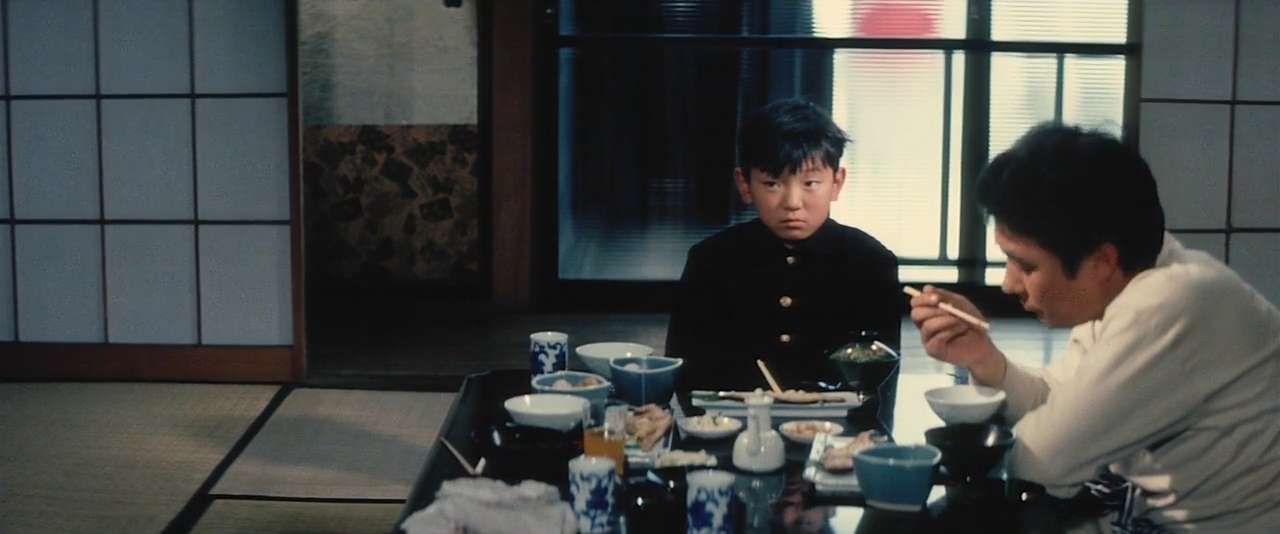
The boy in his school uniform (Bin Amatsu) at a table in a traditional Japanese room with his meal untouched. A man eats next to the kid who glances at someone or something offscreen. The table is set for three. DPs: Seizō Sengen & Yasuhiro Yoshioka.
El chacal de Nahueltoro [Jackal of Nahueltoro] (Miguel Littin, 1969)
May
2
soup

The man (Nelson Villagra) just handed a tin plate to kind Rosa (Shenda Román) for a refill while they talk about his life. DP: Héctor Ríos.
Full title: En cuanto a la infancia, andar, regeneración y muerte de Jorge del Carmen Valenzuela Torres, quien se hace llamar también José del Carmen Valenzuela Torres, Jorge Sandoval Espinoza, José Jorge Castillo Torres, alias el Campano, el Trucha, el Canaca, el Chacal de Nahueltoro.
“I forgot the cucumbers.”Nóz w wodzie [Knife in the Water] (Roman Polanski, 1962)
Apr
23
tomato soup
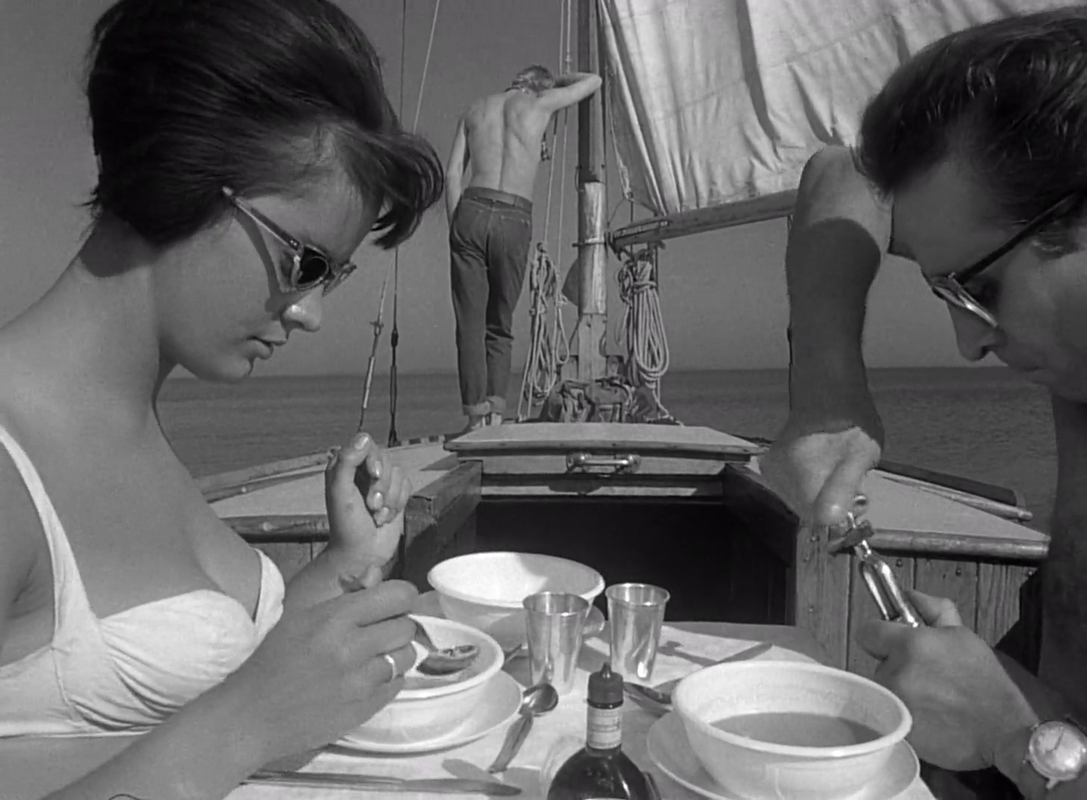
The couple – Jolanta Umecka as Krystyna and Leon Niemczyk as Andrzej – enjoy their little lunch for two of wine and canned soup while the young man (Zygmunt Malanowicz) mopes on the ship's bow. DP: Jerzy Lipman.
– Krystyna
“Trouble is, she likes everything. She's always happy. She desires nothing, envies no one, is curious about nothing. You can't surprise her. She doesn't notice the humiliations, though they happen to her every day. It all rolls off her back like some waterproof material. Zero ambition. No moral code. Not even a whore's love of money.”Io la conoscevo bene [I Knew Her Well] (Antonio Pietrangeli, 1965)
Apr
2
cocktails
.png)
A lone Roberto (Enrico Maria Salerno) at a lively cocktail party in Rome's hypermodern EUR district. DP: Armando Nannuzzi.
– the writer
“Empires, the past – they're beyond me! Will things change for the better? Will bums like these disappear? And the slums too? Come on. Tell us!”太陽の墓場 [Taiyō no hakaba / Grave of the Sun / The Sun's Burial] (Nagisa Ōshima, 1960)
Mar
31
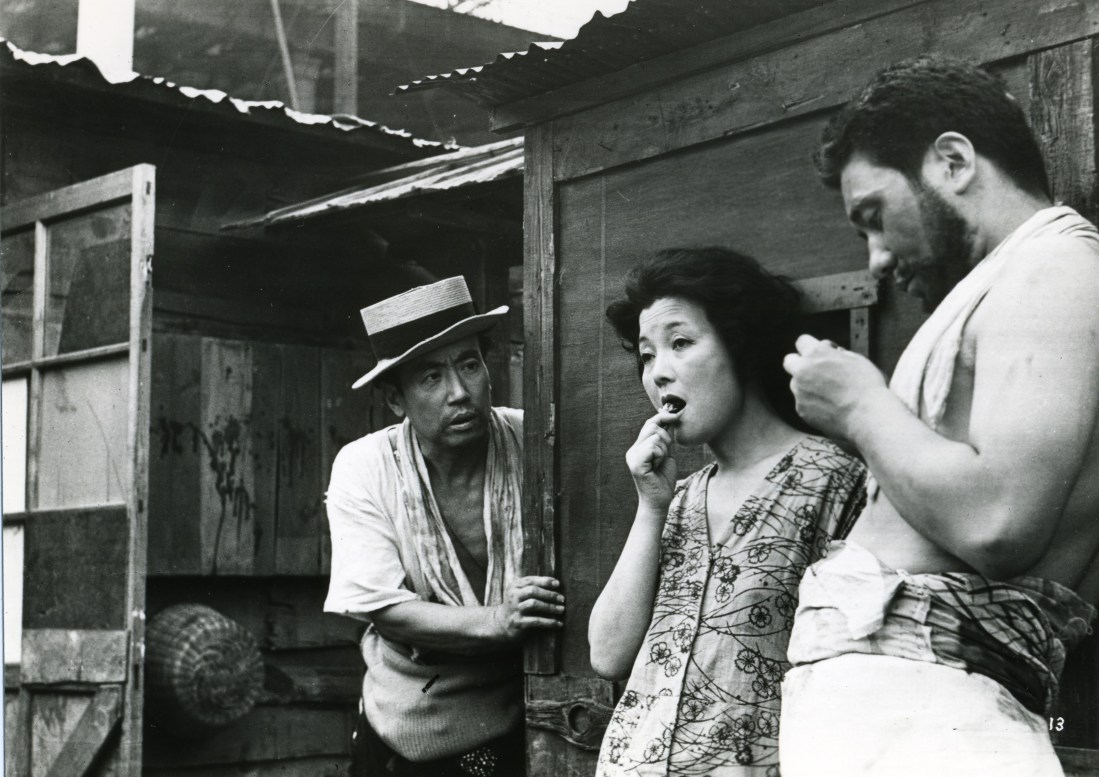
An empty-looking woman eats something while a scrawny man in a pork pie hat and dirty shirt eyes her. Next to the woman a bulking bearded guy, cleaning his nails. DP: Takashi Kawamata.
– Hanako
Salesman (Albert + David Maysles, Charlotte Zwerin, 1969)
Mar
29
breakfast
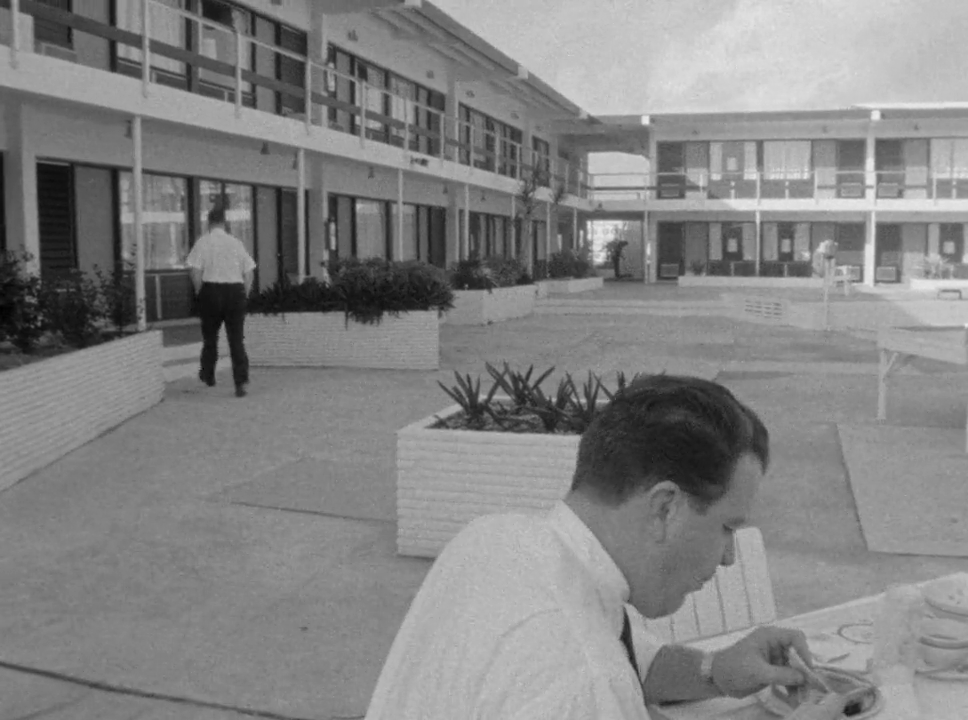
Bible salesmen enjoying breakfast at a soulless motel. DP: Albert Maysles.
Watched on Good Friday.
Los hermanos Del Hierro [My Son, the Hero] (Ismael Rodríguez, 1961)
Mar
19
revenge
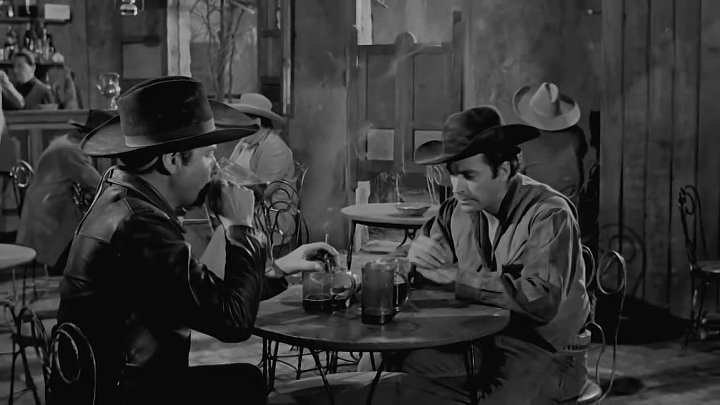
Brothers Martín (Julio Alemán) and Reynaldo Del Hierro (Antonio Aguilar) drinking in a cantina. Reynaldo, the older one, looks pensive while the younger takes a big gulp of beer. DP: Rosalío Solano.
A dish best served cold.